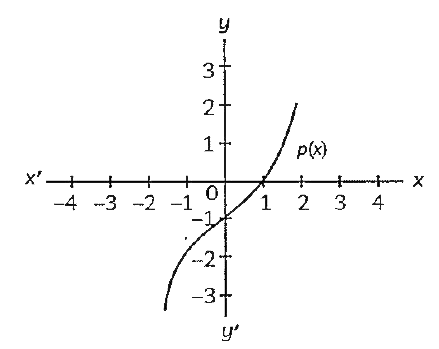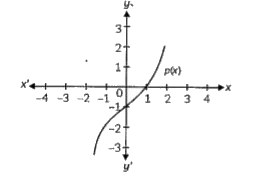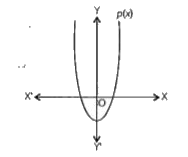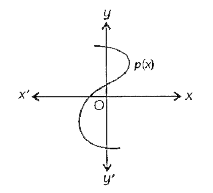What will be the number of zeros of the polynomials whose graphs are parallel to (i)y-axis (ii)x-axis ?
The correct Answer is:(i)1 (ii)0
Step by step video, text & image solution for What will be the number of zeros of the polynomials whose graphs are parallel to (i) y-axis (ii) x-axis ? by Maths experts to help you in doubts & scoring excellent marks in Class 10 exams.
Topper's Solved these Questions
- BOOK - CBSE COMPLEMENTARY MATERIALCHAPTER - POLYNOMIALSEXERCISE - Short answer type (i) question10videos
POLYNOMIALS
- BOOK - CBSE COMPLEMENTARY MATERIALCHAPTER - POLYNOMIALSEXERCISE - Short answer type (ii) question10videos
POLYNOMIALS
- BOOK - CBSE COMPLEMENTARY MATERIALCHAPTER - PAIR OF LINEAR EQUATIONS IN TWO VARIABLESEXERCISE - PRACTICE-TEST (SECTION-D)1videos
PAIR OF LINEAR EQUATIONS IN TWO VARIABLES
- BOOK - CBSE COMPLEMENTARY MATERIALCHAPTER - PRACTICE PAPER IIEXERCISE - SECTION C14videos
PRACTICE PAPER II
Similar Questions
Knowledge Check
- Question 1 - Select One
Find the number of zeroes, for the polynomial p(x) shown in the graph below:
 A0B1C2D3
A0B1C2D3 - Question 2 - Select One
What is the differential equation of all parabolas whose axes are parallel to Y-axis ?
Ad2ydx2=0Bd2xdy2=0Cd3xdy3=1Dd3ydx3=C
Find the number of zeroes, for the polynomial p(x) shown in the graph below :
 View Solution
View SolutionWrite the number of zeros for a polynomial p(x) whose graph is given in the figure.
 View Solution
View SolutionWhat will be the number of zeros of a linear polynomial p(x) if its graph
(i) passes through the origin.
(ii) doesn't intersect or touch x-axis at any point ?View SolutionThe differential equation of all parabolas whose axis are parallel to the y-axis is
View SolutionFind the differential equation of all parabolas whose axes are parallel to y-axis.
View SolutionCalculate the number of zeroes for the graph of a polynomial p(x) as shown below:
 View Solution
View Solution


